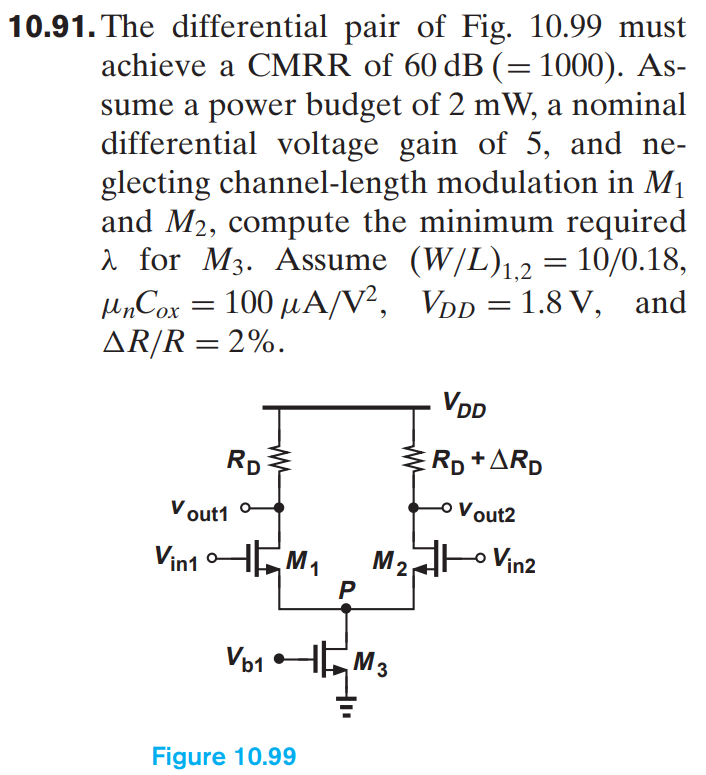10.91. The differential pair of Fig. 10.99 must achieve a CMRR of 60 dB ( = 1000). Assume a power budget of 2 mW, a nominal differential voltage gain of 5, and neglecting channel-length modulation in M1 and M2, compute the minimum required λ for M3. Assume (W/L)1,2 = 10/0.18, μnCox = 100 μA/V2, VDD = 1.8 V, and ΔR/R = 2%. Figure 10.99



You'll get a detailed, step-by-step and expert verified solution.
 Work With Experts to Reach at Correct Answers
Work With Experts to Reach at Correct Answers